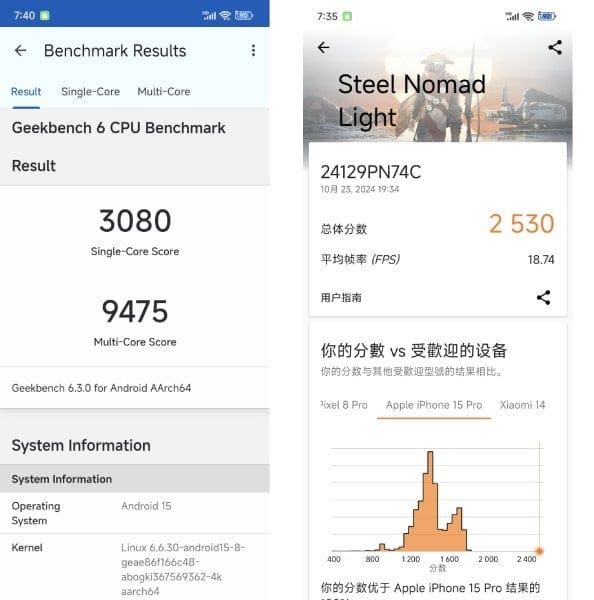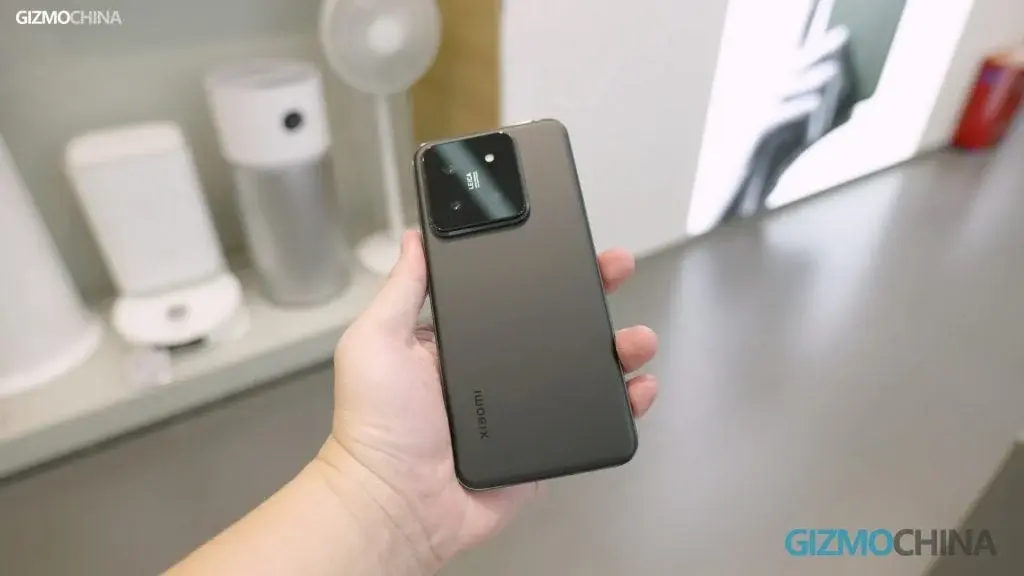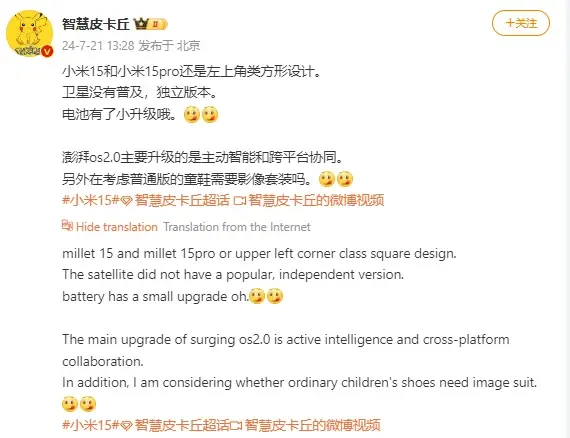Ahead of the launch on October 29, the well-known leaker Digital Chat Station has shared fresh information about the performance of the Xiaomi 15 series.
Performance Insights
The leaker conducted tests on the standard Xiaomi 15 using various benchmarking tools and disclosed its performance metrics as well as gaming abilities in demanding games. They also provided an initial glimpse at HyperOS 2.0, which is Xiaomi’s latest software built on Android 15.
Benchmarking Results
It seems that the leaker has access to the high-end model of the Xiaomi 15, which comes equipped with the Snapdragon 8 Elite processor, 16GB of LPDDR5X RAM, and 1TB of UFS 4.0 storage. In the Geekbench 6 benchmark, the Xiaomi 15 achieved a score of 3080 in single-core testing and 9475 in multi-core testing. Furthermore, in the 3DMark Steel Nomad Light test, it obtained 2530 points with an average frame rate of 18.74.
Gaming Capabilities
When it comes to gaming, the Xiaomi 15 maintains an almost flawless frame rate in popular mobile games. In Honor of Kings, it operates at a consistent 119.8fps with a power usage of only 3.65W, while Genshin Impact, known for being demanding on hardware, runs at a stable 59.9fps at a power consumption of 4.08W. Another title, Star Iron, is said to average 59.8fps with just 4.53W of power required.
The leaker claims that the Xiaomi 15 with the Snapdragon 8 Elite beats the Dimensity 9400 regarding frame rates and energy efficiency, and it significantly outperforms the earlier Snapdragon 8G3. The article even states that there are “clear advantages” in temperature management, which is vital for sustaining optimal performance during long gaming periods.
HyperOS 2.0 Features
HyperOS 2, the forthcoming version of Xiaomi’s custom operating system, is also highlighted. The leaker mentions notable enhancements in overall system smoothness. This encompasses quicker boot times, more fluid interruption animations, and the introduction of transition animations across different user interface aspects.
Display and Battery Rumors
Regarding other specifications, the standard Xiaomi 15 is set to feature a compact 6.36-inch flat AMOLED display, while the Pro model is anticipated to come with a larger 6.78-inch curved screen boasting a 120Hz refresh rate and high-end features like Dolby Vision.
Additionally, there are speculations that the Xiaomi 15 Pro may include a 6000mAh silicon-carbon anode battery, although this is yet to be verified. The Pro version is also likely to support quicker charging speeds. Based on a previously leaked specification sheet, the Pro model is said to enable 80W fast charging.





















